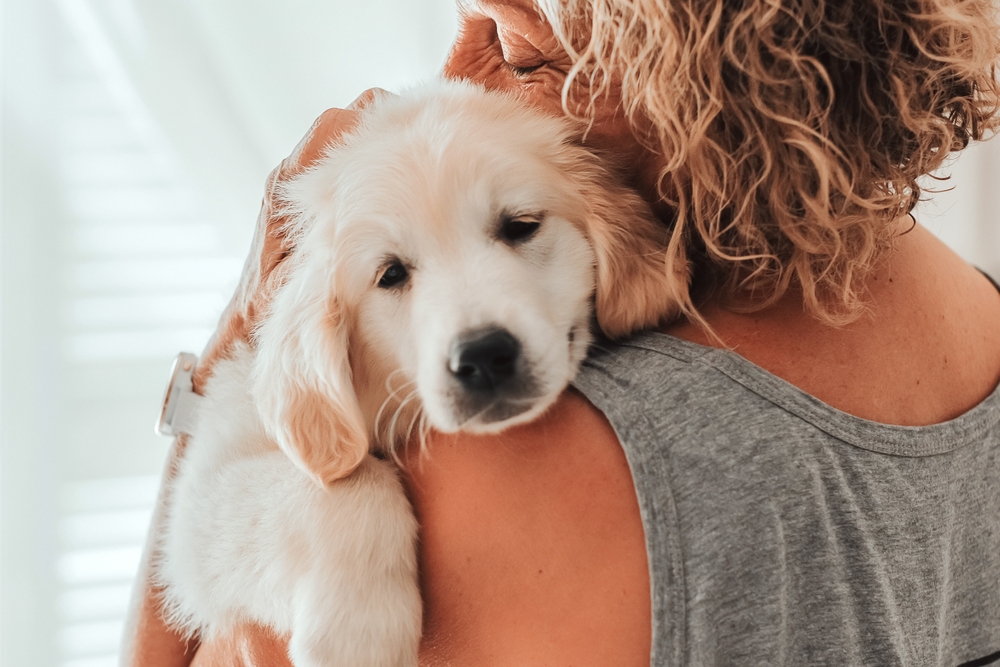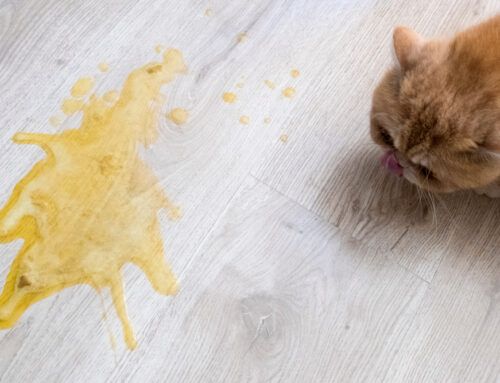Separation Anxiety in Dogs: Easing the Fear of Being Alone
Dogs that bark, chew, or pace when left alone aren’t being naughty- they’re anxious. Separation anxiety stems from fear and attachment, but with structure, training, and sometimes medication, most dogs learn to relax when home alone.
At Arcata Animal Hospital, we understand that watching your dog struggle when you leave can be heartbreaking. Our Fear Free approach helps anxious dogs feel safer during veterinary visits, and our team can guide you through behavioral strategies that reduce stress at home. Whether your dog needs a wellness exam or behavioral consultation, we’re here to support both of you with compassion and expertise.
Recognizing the Signs of Separation Anxiety
What Does Separation Anxiety Look Like in Dogs?
Separation anxiety in dogs occurs when a dog experiences extreme distress in response to being left alone or separated from their primary caregiver. Unlike occasional whining or mild restlessness, true separation anxiety involves intense panic that disrupts both the dog’s wellbeing and the household.
Common signs include:
- Excessive barking, whining, or howling that begins immediately after departure
- Destructive behavior focused on doors, windows, or items with your scent
- Attempts to escape crates, rooms, or yards, sometimes resulting in injury
- House soiling despite being housetrained
- Pacing, drooling, or trembling before you leave
These behaviors aren’t spite or poor training. They’re physiological responses to fear. Understanding behavioral problems in dogs helps owners recognize when professional intervention is necessary.
If your dog shows signs of distress when left alone, a thorough wellness exam can rule out underlying medical causes and help determine whether anxiety-reducing strategies or medication might help.
Why Some Dogs Struggle When Left Alone
Understanding the Root Causes of Separation Anxiety
Not all dogs develop separation anxiety, but certain factors increase vulnerability. Changes in routine, environment, or family structure can trigger anxiety in dogs who were previously calm when alone.
Common contributing factors include:
- Sudden changes in schedule, such as returning to work after extended time at home
- Rehoming or shelter adoption, especially if the dog experienced abandonment
- Loss of a family member or another pet
- Traumatic experiences during alone time, such as storms or break-ins
Early socialization of puppies helps build confidence and independence. Puppies who learn that being alone is safe and temporary are less likely to develop anxiety later. However, even well-socialized dogs can develop separation anxiety following significant life changes.
Our team at Arcata Animal Hospital can help identify triggers and develop management plans tailored to your dog’s history and temperament. Schedule a consultation to discuss your dog’s specific needs.
Training Techniques That Reduce Anxiety
Building Confidence Through Gradual Desensitization
The most effective approach to separation anxiety solutions involves teaching your dog that your departure isn’t a crisis. Gradual desensitization helps dogs learn to tolerate increasing periods of alone time without panic.
Start by creating positive associations with your departure cues. Pick up your keys, put on your shoes, or grab your bag without actually leaving. Reward calm behavior with treats or praise. Once your dog remains relaxed during these cues, practice brief absences- stepping outside for 30 seconds, then returning before anxiety begins.
Slowly extend the duration, always returning before your dog becomes distressed. This teaches them that you always come back and that being alone is temporary and safe.
Additional strategies include:
- Establishing a calm departure routine without excessive goodbyes
- Providing a special treat or puzzle toy that appears only when you leave
- Using calming pheromone diffusers or sprays in the areas where your dog spends time alone
A positive dog training philosophy focuses on rewarding desired behaviors rather than punishing anxiety-driven
actions. Punishment increases fear and worsens separation anxiety, while positive reinforcement builds confidence and trust.
For dogs with severe anxiety, our AAHA-accredited practice can discuss whether anti-anxiety medication might support behavioral modification efforts during the training process.
Keeping Your Dog Mentally Engaged
The Role of Enrichment in Reducing Anxiety
A tired, mentally stimulated dog is less likely to fixate on your absence. Regular exercise and enrichment activities help dogs burn energy and develop independence, both of which reduce anxiety.
Physical exercise- walks, runs, or play sessions- should happen before you leave. A dog who’s physically tired is more likely to rest during your absence. However, mental stimulation is equally important. Dog enrichment ideas include puzzle feeders, scent games, and interactive toys that challenge problem-solving skills.
Effective enrichment activities include:
- Frozen Kong toys stuffed with peanut butter or wet food
- Snuffle mats or treat-dispensing puzzles
- Rotating toys to maintain novelty and interest
DIY cognitive dog toys can be made at home using household items like muffin tins, towels, or cardboard boxes. These activities engage your dog’s natural foraging instincts and provide mental stimulation that reduces boredom and anxiety.
At Arcata Animal Hospital, we can recommend specific enrichment strategies based on your dog’s age, breed, and energy level during your next preventative healthcare visit.
When Home Strategies Aren’t Enough
Recognizing Severe Cases That Need Professional Help
Despite consistent training and enrichment, some dogs need additional support. Severe separation anxiety can lead to self-injury, property destruction, or chronic stress that affects overall health.
Signs that professional help is needed include:
- Persistent anxiety despite weeks of desensitization training
- Destructive behavior that causes injury or significant property damage
- Refusal to eat or drink when alone
- Regression after initial improvement
Creating an enriching environment for dogs that promotes calm behavior is essential, but some dogs also benefit from veterinary intervention. Anti-anxiety medications, used alongside behavioral modification, can help dogs feel safe enough to learn new coping strategies.
Our veterinarians can perform a thorough evaluation using diagnostic testing to rule out medical conditions that mimic or worsen anxiety, such as pain, cognitive dysfunction, or thyroid imbalances. Once medical causes are excluded, we can discuss behavioral medications, pheromone therapy, or referral to a veterinary behaviorist.
Arcata Animal Hospital also offers acupuncture and regenerative therapies that support overall wellbeing and may help reduce stress in anxious dogs. Our team combines big-city veterinary medicine with small-town care, ensuring your dog receives comprehensive support.

Supporting Your Dog’s Mental Health
Separation anxiety is treatable, but it requires patience, consistency, and sometimes professional guidance. Most dogs improve with gradual desensitization, enrichment, and positive reinforcement. For severe cases, medication and behavioral therapy provide relief and help dogs regain confidence.
At Arcata Animal Hospital, we’re committed to supporting the human-animal bond by addressing both physical and emotional health. If your dog struggles when left alone, our Fear Free-certified team can help you create a plan that works for your family.
Call us or contact us today to schedule a consultation. Whether your dog needs emergency care for anxiety-related injuries or a comprehensive behavioral evaluation, we’re here to help your dog feel safe, calm, and confident at home.







Leave A Comment